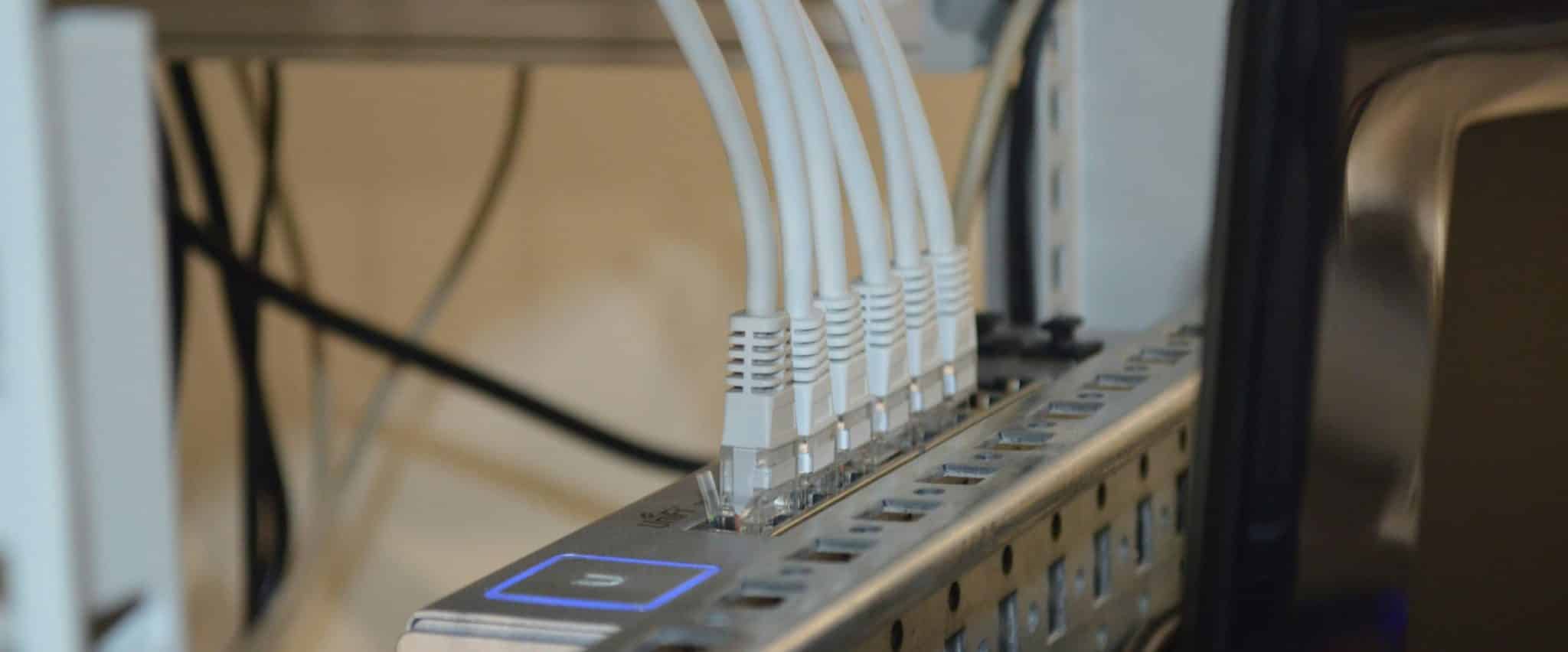Complete Guide to Effective Network Penetration Testing
Network penetration testing is a strategic practice that moves beyond mere compliance as it validates your system’s real-world security posture and significantly reduces the risk of system vulnerabilities. When executed effectively, it inherently prepares your team for robust incident response. In this article, we share actionable insights on how to implement penetration testing to achieve these security outcomes.
The blog gives an overview of:
- key elements of a strong network pentest
- best timing and reasons to run a pentest
- what results and reports to expect
- how to prepare your team and systems
- common testing issues and how to fix them
- signs of a low-value pentest.

Table of Contents
It has become common knowledge that firewalls, patching, and endpoint controls alone are insufficient to fully protect against modern cyber threats. The key to effective defense is proving that they work effectively against actual, realistic attacks.
Network Penetration Testing represents the practice of simulating adversarial attacks on your internal and external network infrastructure with the goal of pinpointing security weaknesses that real-world attackers could potentially exploit. What makes a penetration test different from a simple vulnerability scan is techniques such as manual exploitation, lateral movement, and analysis of the potential extent of compromise once initial access is achieved.
Instead of simply covering the basic requirements for meeting regulations, we’d like to focus on the proper and most effective execution of pen testing to achieve genuine security benefits for your software. It details the essential components and best practices of effective pen testing, clarifies the optimal timing for performing this assessment along with its possible outcomes, and provides advice on internal preparation to ensure that this test delivers real security value.
Table of Contents
What a Strong Network Penetration Test Should Include
The purpose of network penetration testing surpasses detecting system weaknesses. It is designed to provide insight into how those weaknesses could be exploited within your particular operational context. The testing must imitate the behavior of a realistic attacker in your network, not just how they navigate your system, but also the possible ways in which they can undermine systems and access sensitive data.
Though each use of network penetration testing is unique to the specific architecture and goals of the organization, most of these tests follow a standard sequence of steps:
- Scoping
This initial phase centers on collecting information about objectives, target systems, and, most importantly, testing boundaries. - Reconnaissance
In this next stage, the focus shifts to gathering information about network assets and exposures. - Vulnerability Identification
This critical part involves comprehensive scanning to define weaknesses such as open ports, outdated services, or misconfigurations. - Exploitation
During this step, testing simulates attempts to breach systems using real-world attack techniques. - Post-Exploitation
This stage checks how far an attacker could go after a breach (e.g., lateral movement). - Reporting
This conclusive phase summarizes technical findings, business risks, and remediation priorities.
Apart from the aforementioned operations, a truly effective pen test involves a set of additional features:
- Internal and External Testing Scope
The testing process must cover both the parts of your system that are directly accessible from the internet and those within your company’s network. The scope of testing in these areas is defined by specific threats you are most concerned about. Usually, internal testing imitates such scenarios as compromised user credentials or malware introduced through phishing attacks. - Simulated Real-World Attacker Behavior
The assessment should reflect realistic attack patterns, which encompass:- Lateral movement that targets access to adjacent systems
- Privilege escalation as a way of gaining administrative control
- Exploitation of misconfigurations, chained exploits, or overlooked weaknesses
- Blend of Automated and Manual Techniques
While automated tools are used for evaluating system-wide consistency, manual testing is reserved for detecting complex, multi-step attacks that often go unnoticed during automated scans. - Clear Rules of Engagement
To ensure safety and alignment with your organization’s processes, every security assessment project must operate with clearly defined parameters, specifically:- Scope of assets
- Allowed techniques
- Timeframes
- Downtime-sensitive systems or exclusions
- Communication protocols during the test
When and Why You Need a Network Pentest
The optimal time for performing a penetration test should align with specific cases of system updates or changes, security risks, new feature deployments, or compliance requirements. In this section, we outline the situations in which network pen testing brings the most benefit to an organization as a tool for improving overall levels of security.
Post-Incident or Near Miss
Network pen testing is warranted after your organization has experienced a breach, a security alert that triggered an internal investigation, or detected suspicious behavior. Network penetration testing gives you insight into the attacker’s behavior, along with such knowledge as the currently existing weaknesses in the environment and whether your defenses functioned properly. Regardless of the scope of the damage, a post-event test provides a clear understanding of the incident and helps you avoid recurrence.
After Launching New Services or Exposing New Endpoints
The implementation of new applications, APIs, cloud services, or externally facing systems like VPNs and remote desktop gateways can create new weak points. In the cases where these features are deployed hastily, security configurations are often overlooked. Performing pen testing on these newly introduced areas exposes misconfigurations, insecure defaults, overlooked access points, and other vulnerabilities to prevent attackers from exploiting them in the future.
After M&A, Third-Party Onboarding, or Network Integrations
If your company engages in mergers and acquisitions (M&A) or forms new external partnerships, there’s a chance of additional risk. These initiatives involve connecting internal systems to outside environments or integrating another company’s network, which often results in open paths that could be used by attackers. Penetration testing in this situation ensures proper segmentation and access control, as well as secure integration of both environments. This is particularly important when the combined setup includes VPNs or legacy systems.
After Major Infrastructure or Cloud Changes
Cloud migrations, network architecture restructuring, firewall policies updates, or any other large-scale shifts are likely to alter the way systems communicate and are visible to attackers. Running a pentest, in this example, is a way of ensuring that the updated infrastructure hasn’t created unintended weak points or caused misconfigurations and remains secure and stable.
Before Compliance Audits
Penetration testing is often mandatory for many security and privacy frameworks (e.g., SOC 2, ISO 27001, HIPAA, or PCI DSS), especially when it comes to network security. Regardless of the framework you’re working with, running a pen test before a formal audit allows you to identify and resolve issues before they are discovered by auditors. By doing so, you are less likely to have security flaws detected during an external evaluation, plus this shows your genuine investment in maintaining high levels of security.
On a Regular Cadence
Attackers are constantly finding new ways to exploit systems, so the risk persists even if your infrastructure hasn’t experienced major changes. To be constantly aware of your weaknesses, it is highly advised to conduct pentests regularly. Your risk profile and working field are what ultimately define the frequency of the testing, whether it is performed quarterly, biannually, or annually. Through regular testing, organizations can validate the ongoing effectiveness of their existing controls and foster continuous security improvement.
Expected Deliverables and Outcomes
What defines high-quality network penetration testing is its ability to not just report on security flaws in your system, but also provide a deep understanding of the problem and practical advice on how to prioritize and minimize real-world security threats. However, many pentests are inadequate, as they over-rely on automated tools or lack the understanding of how the detected issues impact the organization, or simply don’t provide specific enough insights. Our goal at Romexsoft is to ensure penetration tests deliver technically precise and business-relevant outcomes that can be immediately put to use by both technical teams and strategic decision-makers.
The following section outlines the main deliverables you should expect from a pentest, as well as the context to assess their quality.
Executive Summary for Stakeholders
Reports must begin with a concise summary crafted specifically for non-technical leaders. The initial section should make the high-level risks clear for CTOs, CISOs, and boards without overburdening them with technical terminology. The structure of the summary has to be designed for usage in internal reporting, risk assessments, and roadmap discussions.
Elements to look for:
- An understandable breakdown of vulnerabilities and their potential impact.
- A clear depiction of the organization’s overall risk posture
- Straightforward terminology appropriate for leadership presentations
Risk-Based Findings, Not Just Vulnerabilities
Aside from technical severity, the test findings must address how the issues may impact the organization. What defines a good report is its capacity to draw clear connections between a specific technical vulnerability and its potential real-world effect on the business. This clarity empowers teams to focus their remediation work where it delivers the most benefit.
The data points each finding should include are as follows:
- Identification of the affected asset
- Utilized the exploitation method
- The business impact (e.g., data loss, downtime, lateral movement)
- Levels of real-world exploitability
CVSS Scoring with Real-World Context
CVSS scoring (v3.1) is considered the standard for rating severity. However, specific context is what defines its relevance. For instance, out of two vulnerabilities sharing the same CVSS score, only one might be exposed to the internet or chained with another exploit. This distinction is paramount for effective risk management.
Every finding must detail the following elements:
- CVSS scores per issue
- Context on exposure level (e.g., public vs. internal)
- Potential for privilege escalation, data exfiltration, or exploit chaining
Clear and Actionable Remediation Guidance
The report must be clear and precise enough for your teams to act on without requiring additional explanations. It must provide specific and technically relevant remediation steps organized by urgency levels. For practicality reasons, it is best to avoid unclear recommendations that offer no details (e.g., “update your system”).
Strong guidance includes such components as:
- Detailed instructions for addressing each identified vulnerability
- Remediation steps organized by severity level (critical, high, medium, low)
- Clear recommendations, including config tweaks, patch details, or design adjustments
Visuals and Attack Path Mapping
Visual representations enable a better understanding of otherwise unclear technical findings. For example, diagrams can help you fully grasp the attacker’s behavior in your network. This feature is essential for aligning teams and handling security issues faster, especially if you’re considering complex or high-risk scenarios.
Key points that effective visuals should demonstrate are:
- Lateral movement techniques used to traverse interconnected systems
- Chained exploits leading to privilege escalation across environments
- Identifiable pathways for potential data exfiltration or unauthorized data access
Retesting and Validation Support
The last stage of the penetration test is the retesting phase. This option is offered once you have implemented fixes, with the purpose of giving you a measurable comparison of risk before and after the remediation and validating that security issues were resolved correctly. This process is often necessary for audit or compliance purposes.
Retesting should provide such information as:
- Confirmation that previously identified vulnerabilities have been successfully remediated
- A finalized report detailing the verified closure of each issue
- Validated evidence suitable for compliance and internal audit requirements
How to Prepare Internally for a Network Penetration Test
A mandatory condition for performing a successful and valuable penetration test is proper internal readiness of the environment. You must ensure that your organization’s goals align with the scope of the testing and operational capacity of your systems; otherwise, the results of the test might be misleading or irrelevant to the business objectives. If your team lacks in-house expertise or resources, consider cooperating with experienced software testing service providers. This will guarantee comprehensive coverage during the preparation phase.
Let’s walk through the main stages of an effective preparation process.
Define Scope and Objectives
The first step is to clarify what specific elements of your software must be tested, whether those are internal networks, external infrastructure, cloud environments, specific subnets, or hybrid components. Once you have defined the scope, you must identify why exactly you need to perform a penetration test. The goals could range from readiness for compliance audits and real-world attacker resilience to post-incident validation.
It is important to have highly precise objectives, given that an overly broad or vague scope can result in unclear outcomes and wasted resources.
In short, you must ensure these three things:
- Clearly defined scope, including specific inclusions and exclusions
- Test objectives aligned with organizational and business priorities
- Emphasis on high-risk areas and compliance-driven requirements
Build an Accurate Asset Inventory
The quality and accuracy of a penetration test directly depend on your input. For the test to be effective, a full and up-to-date asset inventory of all in-scope systems, such as public IPs, domains, cloud resources, network segments, and infrastructure components, is required.
Also, pay close attention to legacy systems or critical production assets, as they often demand special handling or risk mitigation.
During this stage, provide:
- Comprehensive asset inventory, including IP ranges, DNS entries, servers, and cloud endpoints
- Identification and flagging of legacy or high-risk systems requiring cautious handling
- Validation of asset ownership and confirmation of current operational status
If your inventory is insufficient or outdated, it might lead to false negatives (missed risks) or false positives (irrelevant findings).
Segment the Network Where Possible
Review your current network segmentation before you start the test. Having strong segmentation, which utilizes VLANs, firewalls, or access control lists, will prevent potential attackers from exploiting additional parts of the system.
On the other hand, weak segmentation, despite being a severe security flaw, can provide valuable insights during a penetration test by clearly demonstrating what a real attacker could achieve. That said, letting flat networks be exploited during a pen testing might be risky if you’re not prepared.
In this phase, provide:
- Verification of network segmentation and isolation controls
- Evaluation of access control mechanisms and firewall configurations
- Clear documentation of intended trust boundaries and access expectations for testers
Engage Key Stakeholders Early
Good communication and proper team involvement are the key to achieving a smooth and effective penetration test. This type of assessment impacts various parts of the organization, so it’s important to ensure cross-functional coordination across both technical and non-technical teams. Those typically involve security, IT infrastructure, application owners, and business units.
To facilitate efficient communication and ensure swift response to all questions and findings, appoint one dedicated person to be the main point of contact for the test.
This phase requires:
- Consensus among stakeholders regarding objectives and acceptable risk levels
- Appointment of internal liaison(s) to coordinate test activities
- Defined communication protocols for status updates and incident management
If all the stakeholders aren’t properly aligned, it might result in delayed remediation and complications during reporting.
Assess Downtime Risks and Set Exclusions
There are systems that cannot be tested directly due to high sensitivity or potential severe consequences in case of failure. This limitation doesn’t hinder the process, as long as those systems are clearly defined beforehand. You must establish which parts of the infrastructure must be excluded or can be tested in simulation, as well as identify specific safety controls that are required during active testing.
The best strategy is to prepare backup plans, failovers, or restoration procedures to minimize the impact of any unexpected events.
In this phase, you should provide:
- Identification of mission-critical systems that require careful handling
- Specification of permissible testing windows and blackout periods
- Documentation of test exclusions and systems known to be fragile or sensitive
While not all systems require testing, you must clearly define which areas are excluded and why.
Schedule Testing Smartly
An optimal timing for performing a pen test must align with the availability of all your internal teams and avoid peak hours or production change windows. To prevent stakeholders from unnecessarily triggering incident response procedures or misinterpreting activity, it is best to inform all parties in advance.
What you must ensure during this phase:
- Scheduling tests outside of peak business hours
- Ensuring SOC, NOC, and IT teams are fully informed of the test timeline
- Coordinating test timing with change management and deployment schedules
Lack of proper communication might lead to pentest-related scans or exploit attempts, triggering alert fatigue or disrupting internal processes.
Prepare Logging and Monitoring
The purpose of network penetration testing doesn’t revolve around detecting security flaws alone. Network penetration testing also presents an opportunity for you to test the detection and response capabilities of your software. To maximize this benefit, verify that your logging infrastructure (e.g., SIEM, SOC) is fully operational and finely tuned to identify activities that will occur during the testing.
Think of this test as a way to assess the effectiveness of your alerts and the speed of your team’s response. It will also help identify any existing gaps in your security coverage.
This stage requires:
- Comprehensive logging enabled across all in-scope assets
- Real-time monitoring of test activities by designated personnel
- Simulated alert processing to assess incident response workflows and coverage
A penetration test offers a valuable yet frequently overlooked benefit of evaluating the effectiveness of your detection systems under pressure.
Challenges in Network Penetration Testing and How to Solve Them
Despite its many benefits, network penetration testing comes with certain challenges that must be addressed to achieve proper evaluation of your security system. This part of the article provides a list of the most common pitfalls that occur during network pentests as well as strategies to overcome them.
- Incomplete or Outdated Asset Inventory
- A very common issue is relying on an outdated or incomplete list of systems. Assets that haven’t been properly documented or, worse, identified, will not be tested, which makes them the targets for real attacks in the future.
- Solution: A thorough asset discovery and verification of the list with your IT, cloud, and DevOps teams prior to the test will ensure that all relevant systems are included.
- Lack of Internal Preparation and Stakeholder Alignment
- Lack of internal coordination during testing often causes missed alerts or delays in incident response, as well as confusion among everyone involved. If teams like the SOC, helpdesk, or IT operations aren’t informed in advance, it might lead to false alarms or unnecessary escalations.
- Solution: Upfront communication of the test timeline with all the affected teams and establishment of a single point of contact are the key to achieving proper coordination with the pentesters throughout the assessment.
- Overly Narrow or Unclear Scoping
- Vague or overly limited test scope risks excluding critical systems, a pitfall that negatively impacts the effectiveness of the entire test.
- Solution: Test goals and in-scope components (e.g., assets, systems, IP ranges) must be clearly established. To secure alignment between your organization and the testing team, use a documented rules-of-engagement (ROE) agreement.
- Testing That Disrupts Production Environments
- If the testing is poorly planned or excessively intense, it can result in performance issues and downtime. In some cases, such practices might even cause service outages, particularly in production environments.
- Solution: Sensitive or mission-critical systems must be identified beforehand. The testing itself should be scheduled during off-peak hours. Also, ensure that you can apply low-impact testing methods when required.
- Missed Vulnerabilities Due to Overreliance on Automation
- While automated scanners deliver speed and scalability, they aren’t designed for pinpointing complex attack chains, misconfigurations, business logic flaws, or hidden vulnerabilities.
- Solution: Using both automated tools and in-depth manual testing is preferable, as manual analysis is the only method for uncovering deeper issues that scanners may miss.
- Lack of Real-World Exploitation Simulation
- Some tests only cover the identification of security flaws and don’t imitate real-world hacker behavior that shows how these flaws could be exploited to move through the network or escalate privileges.
- Solution: For an accurate reflection of attacker behavior, the pen test must be confirmed to include real-world tactics like lateral movement, privilege escalation, and chained exploits.
- Inconsistent Reporting Standards
- Teams might work with different reporting formats, which makes it difficult to monitor and manage test results. A poorly written or confusing report might hinder your security response and leave you at risk.
- Solution: Before the test begins, request a sample report. A proper output must have a clear structure and actionable remediation steps, as well as provide a summary of findings tailored for non-technical leadership that illustrates how technical issues will impact the organization.
- No Risk-Based Prioritization of Findings
- Not having security vulnerabilities ranked by risk level might potentially lead to incorrect prioritization and, therefore, result in wasted effort or missed critical fixes.
- Solution: Findings must be categorized based on exploitability and exposure level. What matters is not just technical severity scores, but also the impact the issue might have on the organization.
- Lack of Remediation Guidance and Retesting Support
- If the testing team delivers the final report but leaves your team to interpret and act on findings without further assistance, you risk facing incomplete remediation.
- Solution: Ensure that follow-up consultation or patch validation is included in the engagement. Even better, arrange a second round of testing to confirm that security flaws have been successfully resolved.
How to Spot an Ineffective Penetration Test
Despite the hypothetical benefit, not every test will provide genuine value or a real improvement in security. Some tests may seem thorough in theory, but deliver no practical support to the organization’s decision-making or security.
Many organizations have received generic reports, impractical insights, confusing testing processes, and poor communication, so you are not alone if the entire procedure didn’t give you the anticipated results.
You can identify that a pen test isn’t delivering value by these main indicators:
- Over-Reliance on Automated Scanners
A pen test that operates mostly by using automated tools with little to no manual effort will deliver unreliable results and overlook complex attack paths. Automated testing should be one of the instruments to perform a test, while manual testing should be the basis of the entire assessment, as it is the only tool that can identify chained exploits, privilege escalation, and real-world attack scenarios. When communicating with team, inquire about the percentage of the engagement that features hands-on testing. - Generic, One-Size-Fits-All Reports
A proper report must demonstrate the condition of your specific environment rather than being a list of generic observations. Test results won’t enable proper remediation if they don’t detail specific assets, internal context, business consequences, and practical recommendations. The potential impact on your organization is no less important than technical findings and raw CVSS scores. - No Customization or Discovery Phase
If your specialist moves straight to the testing without aligning the scope and attack model to your specific business model, or simply doesn’t search for the most fitting methodology, the test itself will likely overlook critical issues or even assess the wrong areas. The key to a high-quality evaluation lies in the pentester’s research and understanding of your architecture, goals, segmentation, and compliance context. - No Collaboration or Check-Ins During Testing
Communication must be consistent and transparent, covering status updates, process-related questions, mid-engagement check-ins, and clarifications when needed. If testers are only present when the test starts and during the delivery of final results, they risk misinterpreting configurations or overlooking critical business context. - No Remediation Support or Retesting
The test shouldn’t be over once you receive the list of vulnerabilities. An essential part of any network penetration test is validation, guidance, or a retesting phase once your team has fixed the issues. These follow-up features must be provided by your cybersecurity specialist; otherwise, you will fail to fully resolve the issues. This kind of support is especially important for complex or high-risk findings. - Findings Without Risk Prioritization
If the received list of security flaws isn’t organized by severity level or any other kind of clear prioritization, it risks overwhelming your teams. The results must be ranked based on real-world exploitability and business impact to help your team concentrate on the most important security gaps.
Network Penetration Testing FAQ
On average, a typical network penetration test is performed over 5 to 15 business days. The time depends on the scope, complexity, and size of the environment. The mentioned number takes into account such stages as planning, testing, analysis, and reporting. If you are working with a larger or heavily segmented network, the entire process may take more time to perform thorough manual testing and establish coordination.
Ideally, network penetration testing must be performed at least once a year or after any major infrastructure changes. These could be cloud migrations, new application deployments, M&A activities, or security system implementations. If your organization handles sensitive data or prioritizes regulatory compliance, it may require quarterly or biannual testing to avoid being the target of evolving threats.
The difference lies in methodology. While a vulnerability scan represents an automated process that detects security weaknesses in your systems (e.g., outdated software or misconfigurations), a penetration test imitates real-world attacker behavior using manual testing to exploit those vulnerabilities and test your defenses.
Another distinction is that network penetration testing evaluates the impact of detected vulnerabilities on your organization. Generally speaking, vulnerability scans expose weak spots in your security, and pentests demonstrate which part of your system can actually be breached.
Yes. If you’re aiming to meet compliance standards, such as ISO 27001, SOC 2, HIPAA, and PCI DSS, penetration tests can be quite helpful. Regular testing is often one of the requirements or at least a strong recommendation for complying with these frameworks. Testing is a way to verify that your security controls are effective and prove that you are taking reasonable and responsible steps to protect sensitive information.





